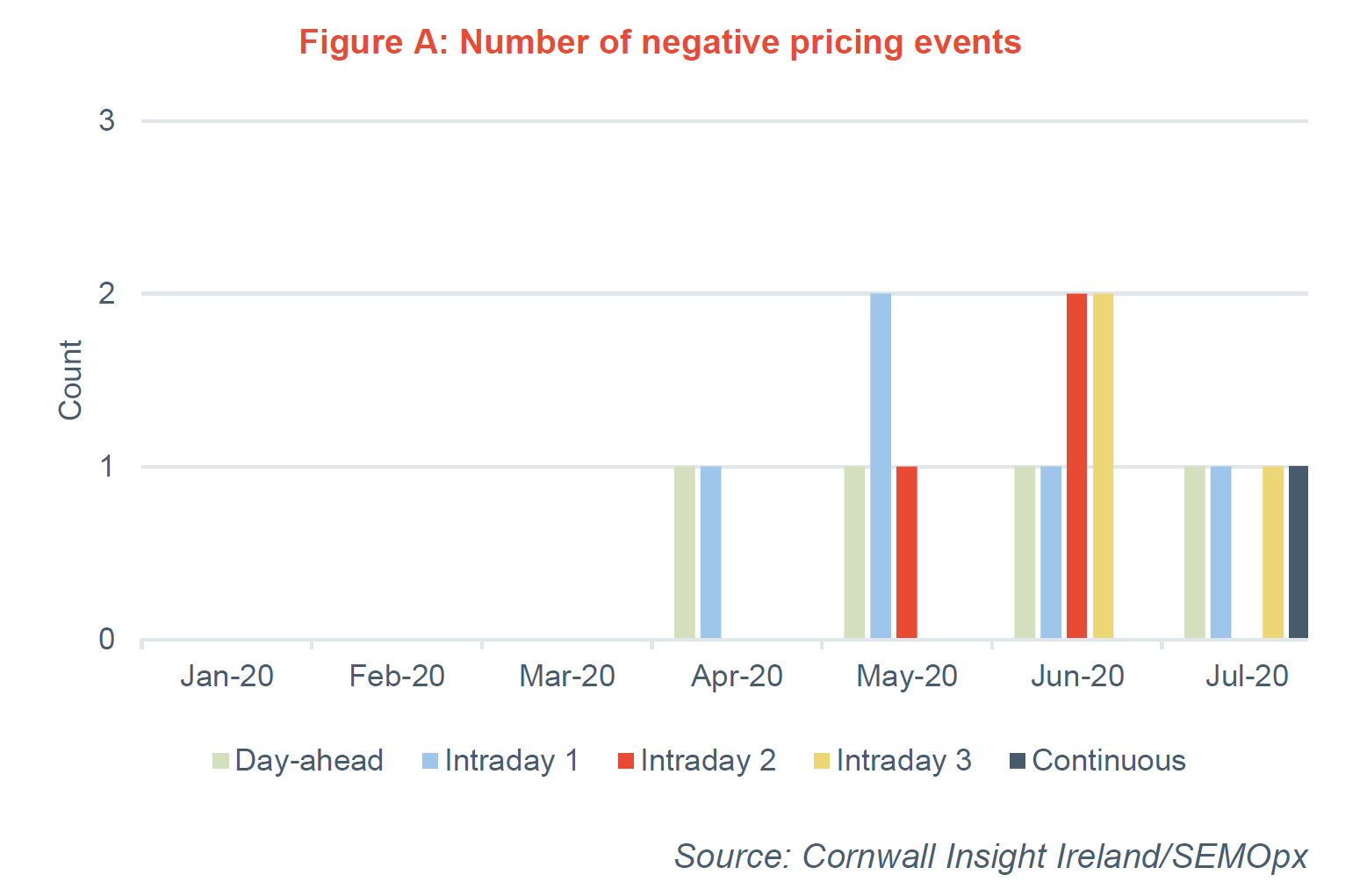Research from Cornwall Insight Ireland shows a continuation of the power markets in the Single Electricity Market (SEM) outturning negative. From the 5th of July, all Intraday and day-ahead markets in the SEM have displayed periods where daily market activity has averaged below €0.0/MWh.
Since April, the SEM has seen a total of 16 negative pricing events, shown in the below graph. This has predominantly occurred in the Intraday one market (five times) and on the day-ahead market (four times).

Joe Camish, Analyst at Cornwall Insight, said:
“Such negative pricing events have only started to occur this year. The first event observed on the 5th of April when the day-ahead and Intraday one market averaged -€2.5/MWh and -€4.6/MWh respectively.
“This is primarily due to a drop in power demand, because COVID-19 measures and strong periods of renewables output have created a perfect storm for negative prices. These negative pricing events also have predominantly occurred over the weekend (15 out of the 16 times), a period of lower demand compared to weekdays.
“While this may benefit flexibility providers, these low prices will be a cause for concern for generators, whose revenues could be significantly affected if this price cannibalisation effect continues.
“With increasing renewables penetration across the SEM, this will be a trend to watch out for as more intermittent renewables capacity comes online.”
About the Cornwall Insight Group
Cornwall Insight is the pre-eminent provider of research, analysis, consulting and training to businesses and stakeholders engaged in the Australian, Great British and Irish energy markets. To support our customers, we leverage a powerful combination of analytical capability, a detailed appreciation of regulation codes and policy frameworks, and a practical understanding of how markets function.
About the Irish Energy Market Bulletin
The Irish Energy Market Bulletin is a weekly publication that tracks the key trends and inputs into the prices across the different markets in SEM, including international factors such as gas and commodities and other more local factors such as constraints, plant outage or wind forecasts.



























